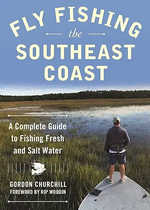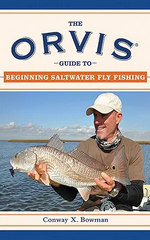Yeah, this is for the real fly fishing nerds. But now you know why we use a relative scale instead of using the actual grain weight for fly lines and rods, It’s much easier to say I have an 8-wt. rod than to say I have a 202-218 grain rod. My brain still works but there is no need to clutter it with too much information. So here is the chart. File it somewhere you can find it quickly should the need ever arise. Some day you will thank me- maybe.
| Line wt. | Standard in grains | Range in grains | Ounce equivalent |
| 1 | 60 | 54-66 | 0.14 |
| 2 | 80 | 74-86 | 0.18 |
| 3 | 100 | 94-106 | 0.23 |
| 4 | 120 | 114-126 | 0.27 |
| 5 | 140 | 134-146 | 0.32 |
| 6 | 160 | 152-168 | 0.37 |
| 7 | 185 | 177-193 | 0.42 |
| 8 | 210 | 202-218 | 0.48 |
| 9 | 240 | 230-250 | 0.55 |
| 10 | 280 | 270-290 | 0.64 |
| 11 | 330 | 318-342 | 0.75 |
| 12 | 380 | 368-392 | 0.87 |
| 13 | 450 | 1.03 | |
| 14 | 500 | 1.14 | |
| 15 | 550 | 1.26 |
While we are speaking of lines, there are 2 basic types of line with 3 subsections under the first type. Lines can be confusing. Orvis has 27 different lines and Cabela’s had 14 pages of line back in the day when they had separate catalogue for fly fishing. Each line is identified by a series of letters and numbers. The two basic types are: 1. Weight forward line (WF); 2. Double Taper (DT).
1. Weight Forward line is the most common type of line. And the most common of the three types of WF line is WF-F or Weight Forward –Floating line. 8- wt. line would be WF-8-F. Then there are a variety of arrangements of the first 30’ where the weight is configured to benefit casting to a particular species.
Weight Forward Floating line is the one you will use most of the time. As noted above, on the package, 8- wt. line would be WF-8-F. Then there are a variety of configurations of the first 30’ where the weight is located (called tapers). There are unique tapers for red drum, tarpon, bonefish, stripers, and trout, to name a few. There’s line for tropical waters and another line for cooler waters. The list of options seems endless. Personally, I tend to use trout tapers for my freshwater rods and most of my saltwater reels have Redfish tapers, though I have some Bonefish, All Around Saltwater and Tarpon taper (11- and 12-wt. reels). Stick with the basics unless you see one that scratches your itch.
Intermediate line: another WF line but with a different code: WF-8-I. This is slow sinking line that is good for surf fishing or any situation in which you need to get just below the surface.
Sinking or sink tip line: Another WF line with still another code: WF-8-S or WF-8-ST. Some line would be WF-300-S, with the 300 indicating the grains (a measure of weight) in the first 30’. This is used when you need to go deeper faster than with Intermediate. Please note in Casting Various Types of Line that there is a special way to cast sinking and intermediate lines so you’re not putting too much stress on your rod.
2. Double Taper (DT) line is used some in trout fishing. The majority of this line is uniform with a slight taper at the front and rear to facilitate tying on the leader at the front and the backing at the rear. DT line is good for roll casts and mending line on light rods on small streams. Some people like it because when you have about worn out the front end of the line, you turn your line around and have identical unused line. That saves a few dollars.
Which line do you need?
-While Weight Forward-Floating (WF-F) is the most used line, the basic choice of which line to use is based on the depth at which you want your fly to fish: top, bottom, shallow bottom, or somewhere in between. Know as well that weighted flies (those that sink instead of float) will sink with their maximum depth theoretically the length of the leader and tippet when fished with WF-F line. So, you don’t necessarily need a Sinking or Sink Tip line if you want to fish below the surface.
-Also, if you will be fishing an area in which you need to make a lot of roll casts and/or mends, a Double Taper (DT) line may be in order since the overwhelming majority of that line is thick, unlike WF-F line in which most of the weight and thickness is found in the first 30-45 feet of the line.
What weight rod/reel/line do you need?
-4, 5-, or 6- wt. for trout and light fresh water
-7- or 8-wt. for bass and general saltwater
-9- or 10-wt. for heavier saltwater and windy days.
-11- of 12- wt. for even heavier saltwater.
-7-wt. rods (even some 6-wt.) and larger have a fighting butt on the rod so you can stick the butt of the rod in your gut (technical term for your waist and belt area) and still have room to use your reel without your stomach getting in the way.
–4-piece rods are easier to transport than 2-piece rods. Both work equally well, thanks to the much improved ferrules used to put the pieces together. When all ferrules were metal, you had a dead spot at each ferrule in that the metal would not allow the rod to bend at that spot. The new ferrules don’t use metal so that is not as much an issue anymore. 4-piece rods tend to cost a few dollars more since there is more labor involved in making them.
But, alas, all is not well in the Fly Fishing world. As noted in paper # 3 about Marking Your Line, it was pointed out that some line manufacturers have decided to change the rules a bit. Since many of their patrons are not the best casters in the world (and who is?), they have found if they add just a bit of weight to their line, their patrons will be able to cast just a little bit longer casts and be able to brag to all their buddies about how long they can cast. So, more and more people buy that line with the extra weight, the competitors realize what is going on and do the same. Before you know it, many lines are ½ to a whole weight higher than what is advertised. There are a lot of folks in our club who go up a line size anyway. But if they go up a line size on a line that is already up a line size, they are beginning to get to the point that they are casting line that is two line sizes above the most efficient for their rod. I say, be truthful and let us decide if we want to cast heavier line. It is said that every rod can cast one line size lower and one higher than its rated line size. No problem. But if you are going up two or three, that could have a negative impact on your casting. Of course, they don’t listen to me. But I still think it is counter-productive. So, read what is said about the line. A lot of these brazen folks brag about upping the weight. Oh well. I guess I’m just an old curmudgeon who expects a certain integrity from those who supply gear for such a polite and genteel sport. This won’t be the first (or last) time I have been disappointed.
Having said that, why does it really matter? The point is to get the fly in front of a fish. In other words, use whatever line works best for your rod casting the flies you normally cast After all, I use a redfish taper for nymph fishing because it makes me think I can cast the nymph rig better.
Don’t forget to check out the resources of Fly Fishers International at www.flyfishersinternational.org.
Also, Google this and other topics of interest and go to YouTube for seemingly endless videos.
Comment from Dean Gayther: Orvis Depth Charge (weighted) line review. Put a weighted fly on, cast, and a few seconds later you can jig off the bottom right over the side of the boat – if that is what you want to do :). Great line and it sinks fast.



